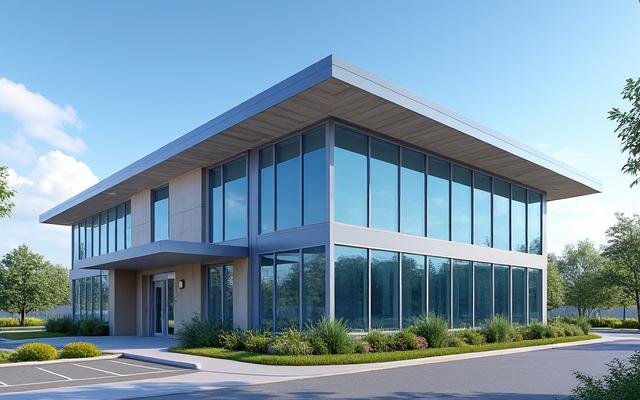Specialized Financing for Healthcare Practices—Equipment, Expansion, and Growth Capital
Medical, dental, veterinary, and allied health financing designed around your practice's unique needs and reimbursement cycles.
Healthcare practices face unique financing challenges—from six-figure equipment costs to insurance reimbursement delays—discover specialized loan solutions designed for medical providers. Healthcare-focused lenders understand your equipment needs, insurance timing, and regulatory requirements, providing clarity you won't find with generic funding sources.
Explore Equipment Loans Plan Your Acquisition
Medical Equipment Financing—Fund Advanced Technology for Your Practice

Acquiring state-of-the-art equipment is often the single largest capital requirement for a growing practice. Understanding the nuances between loans and leases—and how they impact your cash flow—is critical.
Common Financing Structures
- Equipment Loans: Typically finance 80-100% of the cost, using the equipment itself as collateral. Terms often extend 3-10 years.
- Equipment Leases: Offers lower monthly payments and flexibility for technology refresh cycles. Consider Operating vs. Capital lease benefits.
- Sale-Leaseback: Convert equipment you already own into immediate working capital while retaining the ability to use it.
Key Qualification Factors
Lenders specializing in the medical sector look closely at your practice revenue, patient volume stability, and the resale value of the specific equipment being purchased. Personal practitioner credit (typically 680+) remains an important factor, especially for newer practices.
Maximize Tax Benefits
Purchasing vital equipment often comes with significant tax advantages. Strategic planning around Section 179 deductions (up to $1.16M in 2024) and bonus depreciation can drastically lower the effective cost of your investment. We provide educational frameworks to help you evaluate the accounting impact of buying versus leasing.
Practice Acquisition & Partnership Buy-In Financing
Acquiring an existing practice or buying into a partnership is a complex transaction requiring specialized financial valuation and structuring expertise.
Acquisition Financing Options
Crucial Due Diligence Points
Before closing, thoroughly analyze three years of practice financial statements, patient retention data, insurance contracts, and accounts receivable aging. Proper valuation—often based on a multiple of revenue or EBITDA (typically 0.6-1.2x revenue)—is fundamental to securing favorable terms.

Practice Expansion & Facility Financing

Real Estate Financing Solutions
For owner-occupied medical office buildings (MOBs), the SBA 504 loan program is unparalleled, offering LTV up to 90% and long 20-25 year terms. For tenant improvements and build-outs in leased spaces, construction loans converting to term loans cover specialized improvements like plumbing, radiation shielding, or advanced HVAC necessary in a medical setting.
Financing Growth Across Multiple Locations
Expanding your footprint requires a coherent financing strategy. Whether opening a second satellite office or integrating new specialty services, the capital plan must account for:
- 1. Equipment Needs: Financing for new location setup.
- 2. Real Estate: Utilizing SBA 504 for property purchase or leasehold improvement loans.
- 3. Working Capital: Business Lines of Credit to bridge the ramp-up period until the new location achieves patient volume sufficiency.
Cash Flow & Working Capital Solutions
Insurance reimbursement delays (often 30-90+ days) and high upfront supply costs frequently create cash flow gaps, even for profitable practices. Working capital solutions are designed specifically to stabilize this cycle.
The Power of a Business Line of Credit
A revolving Business Line of Credit (typically $25K-$250K) is ideal for managing payroll and operational expenses during reimbursement delays. You draw funds as needed and only pay interest on the outstanding balance, providing financial agility without the high cost of alternative financing.
Factoring vs. Line of Credit
Invoice Factoring (selling outstanding claims for immediate cash) provides faster capital but comes with higher fees (1-5%). We help practices weigh this cost against the flexibility of a traditional Line of Credit, ensuring the chosen solution supports long-term revenue cycle management goals.

Specialty-Specific Financing Guidance
A dental operatory budget differs wildly from a cardiology suite. Financing must reflect the unique equipment costs, revenue cycle, and growth patterns of your specific medical field.
Dental Practices
Focus on high equipment turnover (chairs, imaging, laser systems) and the need for working capital to support patient payment plans. Typical equipment costs run $250K-$500K for a full setup.
Veterinary Clinics
Financing needs often involve specialized surgical suites, large animal care facilities, and non-medical amenities like boarding or grooming expansions. Lending requires familiarity with mixed revenue streams.
Physical Therapy & Allied Health
Emphasis on facility build-out requirements, exercise equipment modalities, and navigating the complexities of authorization and reimbursement timing typical in rehabilitation services.
Financing Your Healthcare Practice Startup
Startup practices face the hurdle of limited operating history combined with massive upfront costs for equipment and build-out. Success relies on a detailed funding strategy and conservative revenue projections.
Startup Funding Roadmap
-
Personal Contribution and Home EquityInitial capital commitment (10-30% of total costs) is essential to build lender confidence.
-
Physician Loan Programs & Manufacturer FinancingSpecialized loans available to new physicians (often based on employment contracts) or equipment financing directly through vendors.
-
SBA Microloans or 7(a) (for larger startups)These programs recognize the challenges of new businesses and provide favorable terms for crucial working capital during the 6-18 month revenue ramp-up period.

Healthcare Financing Resources & Next Steps
Ready to secure the capital you need? Utilize our free educational resources or connect with a specialist for personalized guidance.
Downloadable Guide
Grab our comprehensive Healthcare Practice Financing Guide [PDF] covering all options and qualification criteria.
Download NowRelated Strategic Content
Understand the broader risks by reading our guide: Avoid Common Business Loan Mistakes.
Read ArticleGet Personalized Guidance
Questions about complex partnership buy-ins or specialized equipment? Talk to a Leres Nito expert.
Contact a Specialist